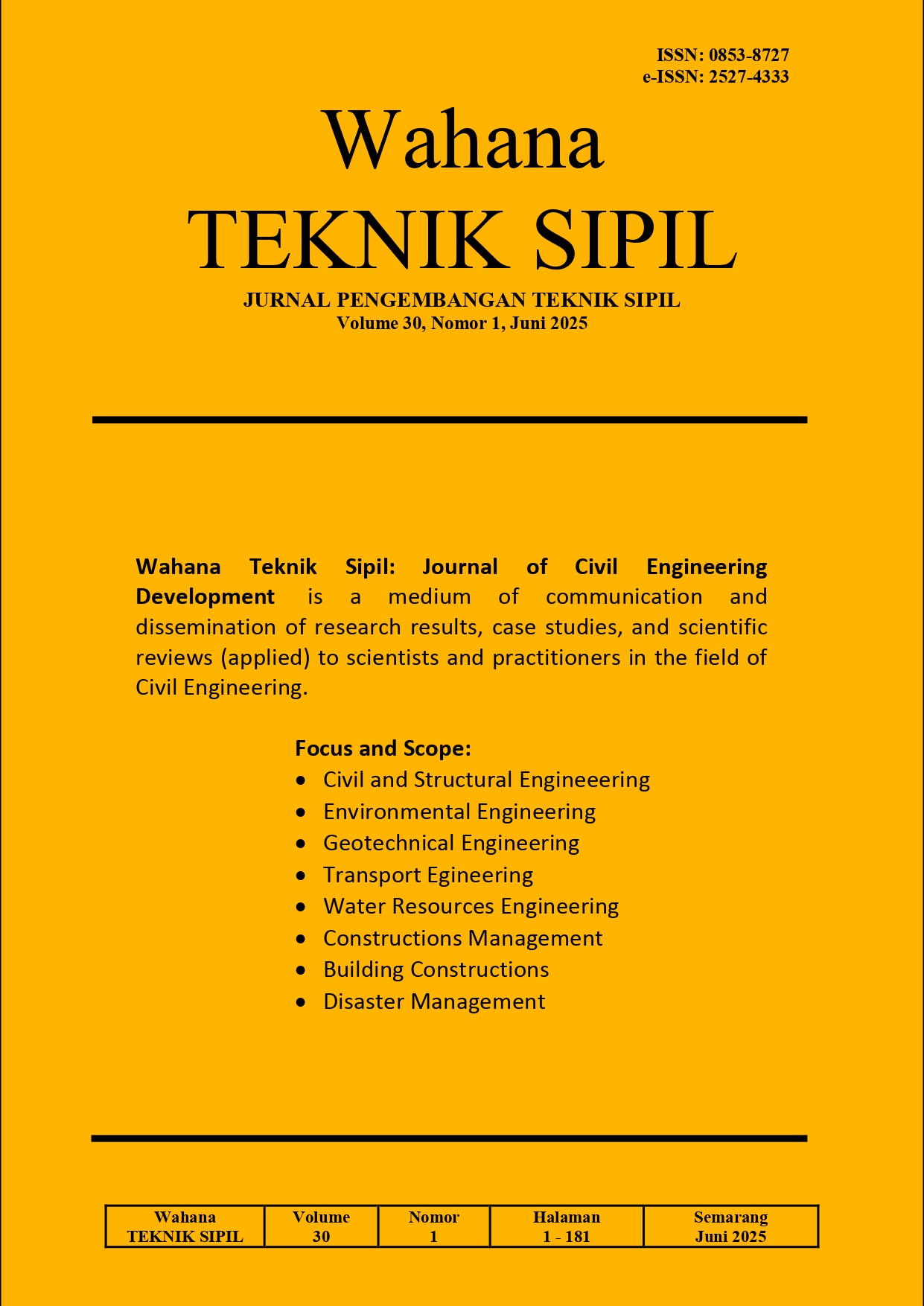DESAIN MODEL BASISDATA PEMELIHARAAN KOMPONEN MECHANICAL- ELECTRICAL GEDUNG SEBAGAI PENDUKUNG FACILITY MAINTENANCE MANAGEMENT (FMM)
DOI:
https://doi.org/10.32497/wahanats.v30i1.6296Keywords:
model basisdata, building information modeling, common data environment, facility maintenance management, mechanical- electrical, computerized maintenance management systems,Abstract
Current planning and implementation of building Mechanical-Electrical (ME) component maintenance are inefficient due to the lack of proven methods and techniques for providing accurate, non-overlapping, effective, and efficient information. Current ME component maintenance management practices and processes face numerous challenges related to data compilation and management, including data loss, wasted time searching for information, and a lack of interoperability. Research on databases, particularly in the building maintenance phase, remains limited. Data compilation is limited to scheduling and existing condition data used to generate routine maintenance reports with reference to implementation dates. This research resulted in an integrated Building MechanicalElectrical Component Maintenance Database Model to support Facility Maintenance Management (FMM). This model has met the requirements by passing the Database Reliability Test. The test used queries ranging from simple to highly complex to provide accurate, non-overlapping, effective, and efficient information needed to manage data on materials, equipment, contractors, types of work, schedules, and costs during the maintenance and repair phase.
References
Alnaggar, A., & Pitt, M. (2019). Towards a conceptual framework to manage BIM/COBie asset data using a standard project management methodology. Journal of Facilities Management, 17(2), 175”“187. https://doi.org/10.1108/JFM-03-2018-0015
Chen, C., & Tang, L. (2019). BIM-based integrated management workflow design for schedule and cost planning of building fabric maintenance. Automation in Construction, 107, 102944. https://doi.org/10.1016/j.autcon.2019.102944
Chen, W., Chen, K., Cheng, J. C. P., Wang, Q., & Gan, V. J. L. (2018). BIM-based framework for automatic scheduling of facility maintenance work orders. Automation in Construction, 91, 15”“30. https://doi.org/10.1016/j.autcon.2018.03.007
Davtalab, O. (2017). Benefits of Real-Time Data Driven BIM for FM Departments in Operations Control and Maintenance. Computing in Civil Engineering 2017, 202”“210. https://doi.org/10.1061/9780784480823.025
Elmasri, R., & Navathe, S. (2016). Fundamentals of database systems (6th ed). Addison-Wesley.
Ensafi, M., & Thabet, W. (2021). Challenges and gaps in facility maintenance practices. EPiC Series in Built Environment, 2, 237”“245.
Gao, X., & Pishdad-Bozorgi, P. (2019). BIM-enabled facilities operation and maintenance: A review. Advanced Engineering Informatics, 39, 227”“247. https://doi.org/10.1016/j.aei.2019.01.005
Hadavi, A., & Alizadehsalehi, S. (2024). From BIM to metaverse for AEC industry. Automation in Construction, 160, 105248. https://doi.org/10.1016/j.autcon.2023.105248
Heaton, J., Parlikad, A. K., & Schooling, J. (2019). Design and development of BIM models to support operations and maintenance. Computers in Industry, 111, 172”“186. https://doi.org/10.1016/j.compind.2019.08.001
Moreno, J. V., Machete, R., Falcão, A. P., Gonçalves, A. B., & Bento, R. (2022). Dynamic Data Feeding into BIM for Facility Management: A Prototype Application to a University Building. Buildings, 12(5), Article 5. https://doi.org/10.3390/buildings12050645
NicaÅ‚, A. K., & WodyÅ„ski, W. (2016). Enhancing Facility Management through BIM 6D. Procedia Engineering, 164, 299”“306. https://doi.org/10.1016/j.proeng.2016.11.623
Sadeghi, M., Elliott, J. W., Porro, N., & Strong, K. (2019). Developing building information models (BIM) for building handover, operation and maintenance. Journal of Facilities Management, 17(3), 301”“316. https://doi.org/10.1108/JFM-04-2018-0029
Downloads
Published
Issue
Section
License
Copyright (c) 2025 Wahana Teknik Sipil: Jurnal Pengembangan Teknik Sipil

This work is licensed under a Creative Commons Attribution 4.0 International License.
Authors who publish with this journal agree to the following terms:Authors retain copyright and grant the journal right of first publication with the work simultaneously licensed under a Creative Commons Attribution License that allows others to share the work with an acknowledgement of the work's authorship and initial publication in this journal.
Authors are able to enter into separate, additional contractual arrangements for the non-exclusive distribution of the journal's published version of the work (e.g., post it to an institutional repository or publish it in a book), with an acknowledgement of its initial publication in this journal.
Authors are permitted and encouraged to post their work online (e.g., in institutional repositories or on their website) prior to and during the submission process, as it can lead to productive exchanges, as well as earlier and greater citation of published work (See The Effect of Open Access).






